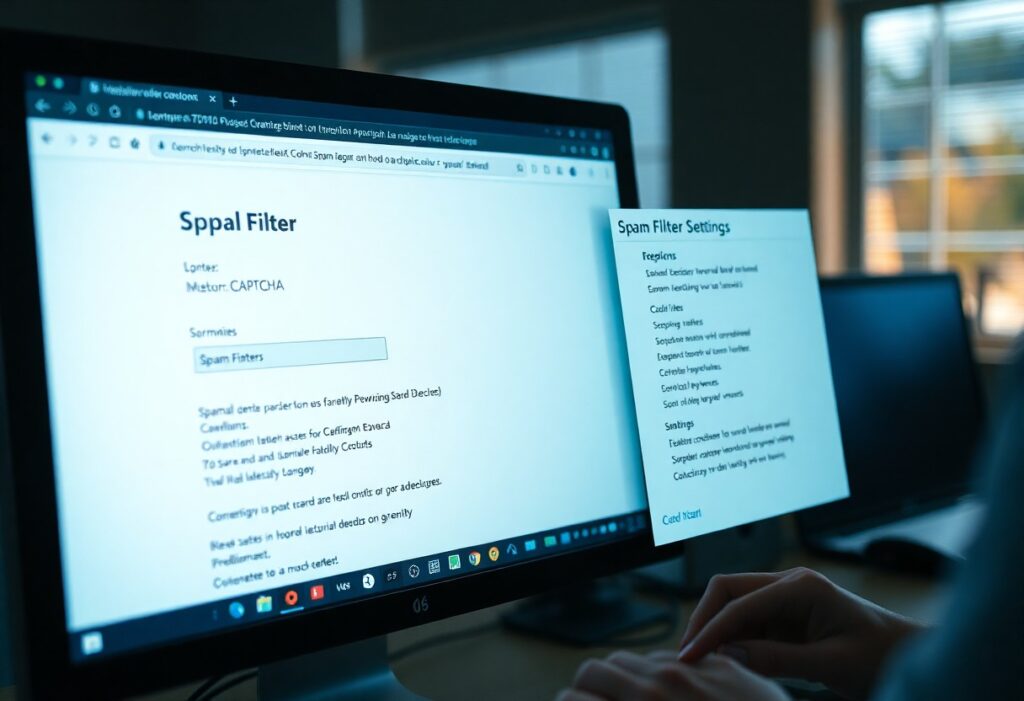Hacked WordPress sites can lead to serious consequences for you, including loss of data, damage to your reputation, and potential legal issues. Understanding the immediate steps you need to take is vital to mitigate the damage and recover your site. You may face issues like website downtime, malware distribution, or even blacklisting by search engines. However, responding swiftly and effectively can help you restore functionality and enhance your site’s security for the future.
Understanding the Risks of a Hacked WordPress Site
A hacked WordPress site poses significant risks that can impact your reputation, finances, and customer trust. Cybercriminals can steal sensitive data, alter site content, or even use your site to distribute malware. The fallout from such breaches often leads to financial loss and damaging effects on your SEO rankings. Early detection is key to mitigating the consequences of a hack, as the longer issues persist, the more extensive the impact on your business can become.
Common Symptoms of a Hacked Site
Identifying a hacked site can be challenging, but there are several telltale signs. You may notice unusual activity, such as sudden changes to your site’s content, unauthorized user accounts, or frequent downtime. Additionally, your website may be flagged by search engines for distributing malware or spam. If you observe warning messages or redirects to unfamiliar sites, those are strong indicators of hacking activity.
Factors that Increase Vulnerability
Your WordPress site’s vulnerability can be heightened by a range of factors. Outdated plugins and themes create exploitable entry points for hackers. Weak passwords, lack of security plugins, and inadequate hosting security measures can further expose your site to threats. Choosing shared hosting without robust security features also increases the risk, as vulnerabilities in other sites can affect yours. Any proactive measures you take can significantly reduce your exposure.
- Outdated plugins and themes
- Weak passwords
- Lack of security plugins
- Inadequate hosting security
To enhance your site’s resilience, consider implementing a robust security strategy. Regularly updating all components, utilizing strong, unique passwords, and employing reputable security plugins can mitigate many risks. Staying informed about the latest security threats and best practices is imperative for maintaining a secure online presence. Any oversight in these areas can lead to devastating consequences.
- Regular updates
- Unique passwords
- Reputable security plugins
- Awareness of security threats
Immediate Steps to Take After a Hack
Act quickly to mitigate damage if your WordPress site is hacked. Begin by isolating the site from the internet to prevent further data breaches or spam distribution. Check for unusual activity, especially unauthorized changes to user accounts or content. Run a full security scan to understand the extent of the breach and identify any compromised files or accounts.
How-to Identify the Breach
Identify the breach by reviewing recent changes to your site. Look for unfamiliar plugins or themes that you didn’t install, and check the user accounts for unknown logins. Use security plugins or tools like Sucuri SiteCheck that can scan your website for malware and vulnerabilities effectively.
How-to Secure Your Site
To secure your site, start by updating all themes, plugins, and WordPress core to their latest versions. Change all passwords, including database and FTP credentials, and implement two-factor authentication for added security. Consider employing a Web Application Firewall (WAF) to filter traffic and block malicious attempts.
Enhancing your site’s security should become a priority. Regularly back up your site, ideally using multiple backup methods, such as through your hosting service and an external service, to ensure you can restore your site easily. Audit your plugins and themes frequently, removing any that are outdated or unused. Monitor login attempts and use a security plugin that can alert you about suspicious activities. By taking these proactive measures, you can significantly reduce the risk of future hacks.
Recovering Your Hacked WordPress Site
Recovery involves a clear approach to restore functionality and security to your hacked WordPress site. Start by assessing the extent of the damage, then proceed with restoration from backups or through manual cleaning processes. Ensuring the site is free of vulnerabilities is imperative to prevent future attacks.
How-to Restore from Backup
Restoring from a backup is the quickest way to return your site to its previous state. Ensure you have a recent backup stored, either through your hosting provider or a plugin. Choose to restore files and databases, making sure to replace any infected components while keeping your content intact.
How-to Clean Malware and Remove Unauthorized Access
Cleaning malware involves scanning your site with security plugins or professional services. Identify and eliminate infected files, change all passwords, and secure your database to remove unauthorized access. This process safeguards your website from recurring threats.
Utilizing security plugins such as Wordfence or Sucuri can facilitate malware detection and removal. These tools scan your files for known threats and offer options for automatic cleaning. After cleaning, ensure all plugins, themes, and WordPress core are updated to the latest versions to reduce vulnerabilities. Additionally, monitor your site regularly and implement a web application firewall to block suspicious activities, ultimately enhancing your site’s security against future attacks.
Tips for Securing Your WordPress Site
Securing your WordPress site requires proactive measures to prevent hacks and breaches. Implement the following strategies to enhance your site’s security:
- Use strong passwords and change them regularly.
- Install a reputable security plugin.
- Limit login attempts to reduce brute force attacks.
- Regularly back up your website data.
- Choose a secure hosting provider.
This holistic approach to security will significantly reduce vulnerability.
Best Practices for Password Management
Creating unique and complex passwords for all user accounts is vital. Avoid using easily guessed information like birthdays or common words. Utilize a password manager to generate and store passwords securely. Regularly update your passwords, ensuring they contain a mix of uppercase, lowercase, numbers, and symbols. Implement two-factor authentication for an added layer of security. This helps safeguard your site from unauthorized access.
Regular Updates and Maintenance
Keep your WordPress core, themes, and plugins consistently updated to protect against vulnerabilities. Outdated software can be a gateway for hackers, making it crucial to apply updates as soon as they are released. Conduct regular security scans to identify potential threats and address them promptly. Additionally, review your site’s user accounts frequently, removing any that are unnecessary or inactive. This approach minimizes the risk of unauthorized access and enhances your overall security posture.
Regularly scheduling updates and maintenance not only fixes known issues but also strengthens your site’s defenses. According to a study by Sucuri, 90% of hacked websites were running outdated versions of WordPress or plugins. Awareness of potential threats and staying informed about the latest security practices directly impacts your site’s integrity. By dedicating time each month for updates and reviews, you can ensure your WordPress site remains at optimal security levels.
Choosing the Right Hosting Plan
Selecting the appropriate hosting plan for your WordPress site significantly impacts its security and performance. Evaluate options that offer reliable uptime, solid customer support, and crucial security features. A hosting provider with a robust infrastructure and resources dedicated to security can make the difference between a secure site and a recurring target for hackers.
Factors to Consider for Security Features
Focus on key security components that protect your WordPress site. Look for hosting plans that include firewalls, malware scanning, DDoS protection, and SSL certificates. Additionally, ensure automatic backups and a staging environment are provided for easy recovery and testing. Recognizing these important security aspects strengthens your defense against cyber threats.
How to Evaluate Your Hosting Provider
Assessing your hosting provider is vital for ensuring robust security. Analyze their security protocols, response times for breaches, and update frequency for software and plugins. Investigate customer reviews and case studies that highlight their incident management capabilities, as real-life experiences can offer insights into their reliability. Prioritizing providers with a solid track record in cybersecurity practices can safeguard your WordPress site against future attacks.
Long-term Security Strategies
Establishing strong long-term security strategies is important to safeguard your WordPress site against future threats. Regular updates, strong passwords, and comprehensive backups play fundamental roles in your site’s resilience. Additionally, educating yourself on new security trends can further enhance your defense against cyber attacks. Stay proactive by investing in security measures that adapt to evolving threats.
How-to Implement a Security Plugin
Installing a security plugin can significantly enhance your site’s protection. Choose a reputable plugin that offers features like firewalls, malware scanning, and login security. Follow the installation guide provided by the plugin developer, configure the settings according to your needs, and monitor the security alerts regularly. You will see improved defenses against hacking attempts.
Tips for Regular Security Audits
Conducting regular security audits helps identify vulnerabilities before they can be exploited. Schedule audits every few months and analyze your website’s traffic, file integrity, and user access. Tools like security scanners can assist in this process. Take notes on any discrepancies and address them swiftly to enhance your site’s defenses. Thou shall ensure your peace of mind with these practices.
- website’s traffic
- file integrity
- user access
To gain a comprehensive understanding of your site’s security posture, utilize automated tools and website analytics. Regularly check for unauthorized access attempts and analyze logs for irregularities. Integration of these audits into your routine will not only fortify your defenses but also keep you informed about your site’s overall health. Thou shall trust in consistent evaluations for lasting safety.
- automated tools
- website analytics
- unauthorized access
Summing up
Drawing together, if your WordPress site gets hacked on your hosting plan, you may face data loss, damage to your site’s reputation, and potential financial repercussions. It’s imperative to act swiftly to identify the breach, restore your site from backups, and enhance security measures to prevent future attacks. You should also inform your users about the breach and take steps to secure sensitive information. Regularly monitoring your site and maintaining updated software can significantly reduce your risk of becoming a victim again.
FAQ
Q: What symptoms indicate that my WordPress site has been hacked?
A: Common symptoms include unexpected content changes, unauthorized admin accounts, redirects to unfamiliar sites, login issues, and increased website errors.
Q: How can I confirm if my WordPress site has been compromised?
A: Check your website’s files and database for unexpected modifications, scan your site with security plugins, and monitor server logs for unusual activity.
Q: What immediate steps should I take if I suspect my site is hacked?
A: Take your site offline, change all passwords associated with the website, and inform your hosting provider for assistance with investigation and recovery.
Q: How can I clean up my hacked WordPress site?
A: Remove malicious code, restore from a clean backup, update WordPress and plugins, scan with a security plugin, and reinstall core files to eliminate vulnerabilities.
Q: Will my hosting provider assist me if my WordPress site is hacked?
A: Most hosting providers offer support for security incidents, including malware removal and restoration services, depending on your hosting plan.
Q: How can I prevent future hacking attempts on my WordPress site?
A: Implement security plugins, regularly update WordPress and all plugins, use strong passwords, enable two-factor authentication, and conduct regular security audits.
Q: What should I do if the hack caused data loss?
A: Contact your hosting provider for backups, restore from the latest backup if available, and review your security measures to prevent reoccurrence.



